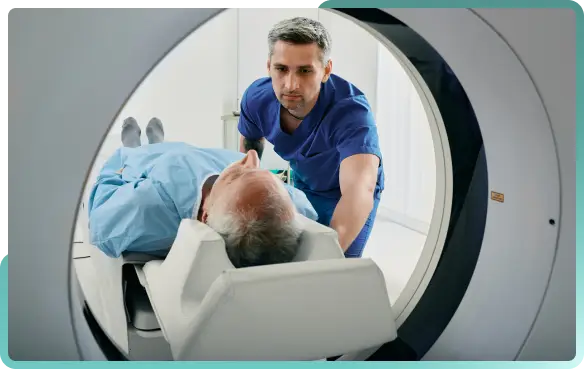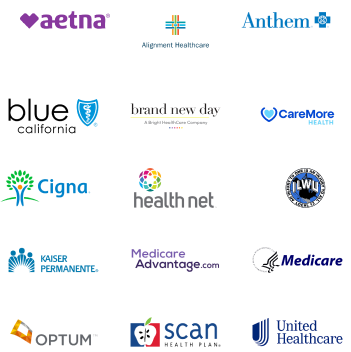Computed Tomography (CT) Scan

What Is a CT Scan?
A CT Scan, or Computed Tomography Scan, employs a sophisticated combination of X-ray technology and computer software. It creates detailed, cross-sectional images of the body's internal structures – a composite of many X-ray images taken from various angles. Unlike regular X-rays that provide a single view, a CT scan offers comprehensive insights, producing 3D visual representations.
How Are CT Scans Done?
In a CT scan, the patient lies on a specialized table, which then slides into the CT scanner – a large, doughnut-shaped machine. As the scanner whirls around the patient, it releases controlled beams of X-rays. These beams pass through the body, captured by detectors on the opposite side. The resulting data is then processed by a computer, creating high-resolution images. The procedure is painless and typically takes only a few minutes, although patients are advised to remain still for accurate results.
When Are CT Scans Used?
CT scans are indispensable in modern medicine. They assist physicians in:
- Diagnosing muscle and bone disorders
- Pinpointing the location of tumors
- Identifying infections or blood clots
- Guiding surgeries and biopsies
- Monitoring diseases like cancer
- Detecting internal injuries or bleeding
What Does a CT Scan Detect?
Common Symptoms & Diagnoses
CT scans offer an inside view, revealing:
- Tumors or cysts
- Infections
- Blood clots
- Bone fractures
- Internal bleeding
- Diseases of the liver, lungs, coronary arteries, and more
- By detecting these conditions early, patients can seek treatment promptly, increasing the chance of successful outcomes.
CT Scans vs. X-Ray Scans
While both CT scans and X-rays employ ionizing radiation, they serve different diagnostic purposes. X-rays are excellent for viewing bones and diagnosing fractures, yet they provide a single-layered image. CT scans, however, offer multi-layered, 3D visuals, allowing for a more detailed look at soft tissues, blood vessels, and internal organs.
CT Scans vs. MRI Scans
MRI (Magnetic Resonance Imaging) uses magnetic fields and radio waves, while CT scans utilize X-rays. MRI provides superior imagery for soft tissues, such as the brain, muscles, and ligaments. CT scans, however, excel in visualizing internal bleeding, bone structures, and pulmonary issues. The choice between them depends on the medical query at hand.
ContinuEM Urgent Care Can Help
In the realm of medical emergencies, time is of the essence. ContinuEM Urgent Care bridges the gap between long wait times and immediate care. Our state-of-the-art CT imaging equipment offers timely diagnostics without the lengthy wait of a typical hospital ER.
We’ve Got You Covered
Our goal is to provide urgent medical care to anyone in the area in their time of need at a cost that is right for them.
Insurance & Pricing
